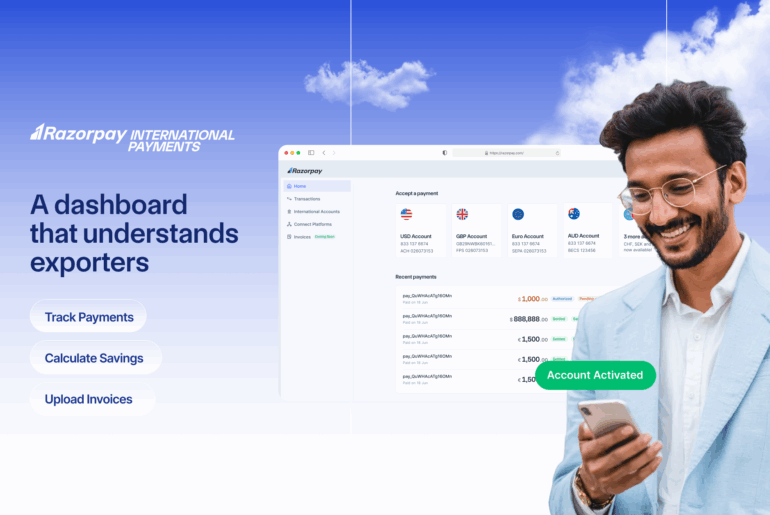We’re back with yet another fascinating edition of ‘The Era of Rising Fintech’!
With the end of September, we wanted to give you a little glimpse of how digital transactions are carried out in the country. We’ve focused on how Indian businesses accept payments, as well as how Indian consumers transact. We also wanted to highlight some of the noteworthy developments in the payments space.
Since Razorpay is a payments platform, it oversees huge volumes of digital transactions of a multitude of businesses. All findings in this report are based on digital transacts on the Razorpay platform carried out from January till September.
(JFM: Jan-Feb-Mar, AMJ: Apr-May-Jun, JAS: Jul-Aug-Sept)
Let’s spring right into it!
The growing demand for digital payments
Consistently, there has been an amplifying demand for digital payments over the past few years. We’ve undoubtedly seen the adoption of UPI and other fintech innovations making banking and payments very experiential for both consumers and businesses.
- According to the report, India observed a whopping 383% growth in digital payments from FY’18 to FY’19.
- Total digital transactions in volume terms recorded a growth rate of 58.8% during 2018-19, on top of a growth of 50.4 percent during 2017-18 – Reserve Bank of India
Although demonetization in November 2016 did not directly aim for India to become a cashless society, it did play a big part in it. The dearth of physical currency gave rise to wallets, just about when mobile payments gained a firming foot.
Just then, NPCI released their innovation – UPI (Unified Payments Interface) which was much ahead of several money centers all around the world. Quickly, a hundred and odd number of banks joined hands to provide UPI as a payment mode to the merchants and consumers. This pretty much created a revolution and played a massive part in the era of rising fintech in the country.
And ever since, cashless India has been a model for the rest of the world.
[Suggested reading: UPI Overhauls Cards as the Preferred Payment Mode at 45%]
P2M Digital transactions in Jul-Aug-Sept
Like we mentioned before, we enable payments of over 600,000 businesses all across India and oversee immense volumes of digital transactions. Based on these transactions, we were able to analyze and gain intricate insight into payment trends throughout the country. Here are some crowning points.
- In JAS, we observed that most consumers preferred digital payments like cards (43.5%), UPI (40.4), netbanking (10.9%) and other online payment modes over cash transactions
- While cards contributed a bigger chunk of digital payments, we noticed that the usage of cards declined by 9% while UPI grew by 26%, from AMJ to JAS
- While UPI grew, Google Pay became the most preferred app with a hefty hand out of 62% of the total UPI transactions.
- PhonePe followed Google Pay by chipping in 25% while PayTM and BHIM did their part by 6% and 5% respectively
As we analyzed the transactions carried out in JAS, we picked up on the top 3 industries that contributed the most.
- Food and beverage industry took the largest cut at 25% while financial services and tours and travels contributed 21% and 15% of the total digital transactions
- Logistics sector saw 161% growth in terms of online payment adoption, followed by government bodies showing 109% growth. Financial services also climbed up the ladder by 57%
Related read: Digital Payments in India
The Era of Rising Fintech – Hyderabad
The top 5 digitized cities of India in terms of payments are Bangalore, Hyderabad, Delhi, Mumbai, and Pune. While we discussed the digitization of Pune (JFM) and Chennai (AMJ) previously, our pick for JAS is Hyderabad. Let’s plunge into the details of Hyderabad’s digital payments ecosystem in JAS.
- Hyderabad is the 2nd most digitized city in terms of payments. Also, Telangana is the 5th highest contributing state in the total volume of digital payments carried out all over India
- UPI has mostly taken over digital payments in the country by a storm. As UPI augmented itself by 222% from January 2019 to September 2019, it became the most preferred payment mode in Hyderabad.
- While there are many UPI apps, Google Pay continues to be the most preferred UPI app in Hyderabad, too. The app was used to carry out 59% of the total UPI payments in JAS
- PhonePe was a close contender contributing 32% of UPI payments made in Hyderabad n JAS. The app also grew in terms of adoption by 84%, seeing the highest growth percent amongst its competition
- In JAS, we noted that consumers preferred cards to make most of their online payments. 41% of payments were made using cards, beating UPI (39%) and netbanking (18%) in the quarter. In September, UPI became the preferred payment mode with a contribution of 45%
- Hyderabad saw the highest number of online payments in Telangana. It’s also interesting to note that cities like Secunderabad, Khammam, Karimnagar, Warangal, and Palwancha also contributed their share to Telangana being the 5th most digitized state
The future of digital payments
After understanding the customer preferences, payment innovations ecosystem of payments and contribution of various industries, we wanted to provide some insight about what’s in store for Hyderabad.
- With the digital lending sector in India projecting growth by $100 billion by 2023, we can surely expect a lot from the 2nd most digitized city in the country
- UPI also has the potential to offer much more than it already has! The payment mode can lead the way with much more customized features that can help increase financial inclusion all over India
- With the government GST incentives and Merchant Discount Rate (MDR) cuts, we can expect an increased and sustained merchant acceptance in Hyderabad
Roadblocks along the way to digitization
India has shown remarkable strides lately, ever since newer fintech innovations became accessible to consumers. Like any other innovation, there certainly are several roadblocks along the way.
- After analyzing digital payments, we can say that there aren’t enough incentives to promote digital payments. Cashback and scratch cards don’t cut it anymore
- There is an insufficient collaboration between banks and fintech bodies
- Smaller merchants need POS terminals along with cheaper payment options
[Suggested reading: Challenges for Banks and Fintech to Work Together]
Over to you
We’re definitely on the way to seeing India becoming a digital superpower. Many cities have already contributed significantly towards its becoming, while tier 2 and 3 cities are slowly gaining momentum.
We’re very excited to see what’s next – with our next edition and a whole new city!



